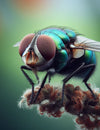When it comes to uninvited houseguests, few pests are as notorious as bed bugs and fleas. These tiny terrors can wreak havoc on your home, causing discomfort, irritation, and even health issues. In this blog post, we'll explore the key differences between bed bugs and fleas and discuss effective ways to combat these persistent pests, with a special focus on the importance of a bed bug killer.
Understanding the Foe: Bed Bugs
Bed bugs are stealthy nocturnal insects that feed on the blood of humans and animals. These flat, reddish-brown bugs are notorious for infesting bedding, mattresses, and other furniture, hence their name. Bed bug bites can result in itchy, red welts and may lead to allergic reactions in some individuals.
Detecting a bed bug infestation can be challenging, as these pests are adept at hiding in cracks and crevices during daylight hours. However, signs such as tiny bloodstains on sheets, molted exoskeletons, and a sweet, musty odor can indicate their presence.
Combatting Bed Bugs:
-
Bed Bug Killer Products: One of the most effective ways to eliminate bed bugs is by using specialized bed bug killer products. These may include insecticidal sprays, powders, and mattress encasements designed to trap and kill the pests. Look for products containing ingredients like pyrethroids, which are known for their efficacy against bed bugs.
-
Professional Pest Control: For severe infestations, seeking the assistance of professional pest control services is advisable. Experienced exterminators have the knowledge and tools to tackle bed bug problems effectively.
Understanding the Foe: Fleas
Fleas, on the other hand, are small, wingless insects that primarily feed on the blood of animals. While they are commonly associated with pets like dogs and cats, fleas can also bite humans. Flea bites typically appear as small, red, itchy bumps and are often found on the ankles and lower legs.
Detecting a flea infestation is somewhat easier than identifying bed bugs. Fleas leave behind telltale signs such as flea dirt (feces), tiny black specks on bedding or pet fur, and the presence of jumping insects.
Combatting Fleas:
-
Flea Treatments for Pets: Since pets are common carriers of fleas, it's crucial to use flea treatments designed for animals. Topical solutions, collars, and oral medications can help control and prevent flea infestations in pets.
-
Environmental Treatments: To eradicate fleas from your home, focus on treating the environment. Vacuuming regularly, washing bedding and pet bedding, and using insecticidal sprays or powders can help eliminate fleas at various life stages.
The Power of Prevention:
Regardless of whether you're dealing with bed bugs or fleas, prevention is key to avoiding future infestations. Here are some general tips:
-
Regular Cleaning: Keep your home clean and clutter-free to reduce hiding places for pests.
-
Sealing Entry Points: Seal cracks and crevices in walls, floors, and furniture to prevent pests from entering your home.
-
Pet Care: Regularly groom and treat your pets for fleas to minimize the risk of infestations.
Conclusion:
In the battle between bed bugs and fleas, identifying the enemy is the first step towards effective eradication. Whether you're dealing with bed bugs or fleas, incorporating a reliable bed bug killer into your pest control strategy is essential for a successful outcome. By understanding the habits and characteristics of these pests and implementing preventive measures, you can reclaim your home from these unwelcome guests. Remember, a proactive approach is the best defense against the tiny terrors that are bed bugs and fleas.



